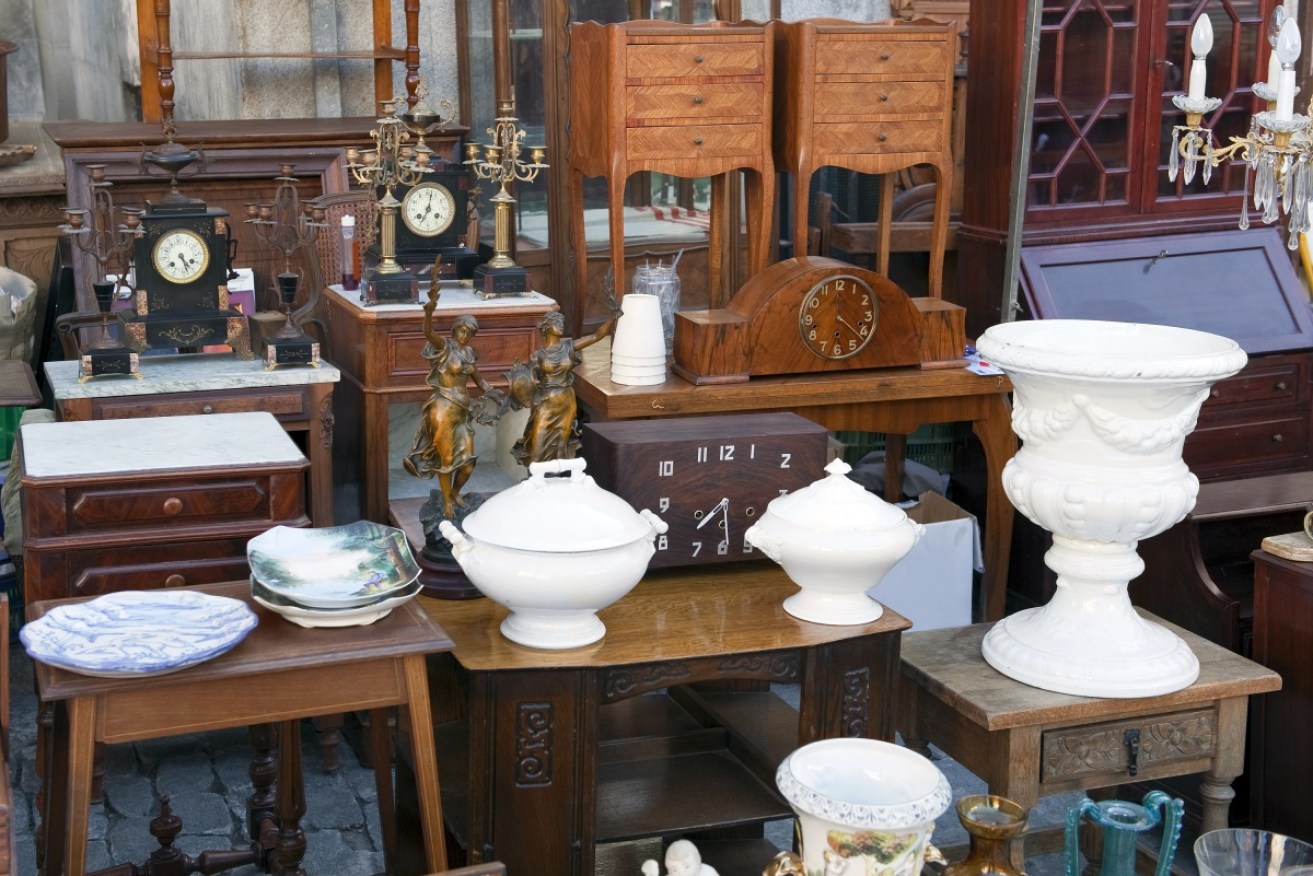Clearing out your estate? Five things to keep and five to throw out

Should you keep that china from Aunty Mavis? What about her old wedding and engagement rings? Photo Getty
The average teenager might earn pocket money by doing housework or other chores, but I wasn’t that kind of average teenager. Instead, my dad dragged me to his work to sort through antiques to earn money. Yes, antiques.
Antiques once seemed like obsolete objects to me. Cleaning them, boxing them up or displaying them for sale, it all felt meaningless and unnecessary.
“How on earth is there a consumer interest in this?” 16-year-old me would think.
For 30 years, my father has made a career out of antiques and auctioning them, along with helping people downsize their belongings and clearing out deceased estates.
And, it turns out, some old doovies and thingamajigs aren’t meaningless or unnecessary after all.
From the expert himself, Steve Graham (my dad), here is what you should keep and what you should toss when you’re downsizing, so you get the most out of your belongings and estate.
Throw away or sell:
1. Fine china
Fine china sets from the likes of Royal Doulton and Royal Albert were once commissioned by the royal family, and the prospect of buying one would send consumers into a frenzy.
These days, consumers are more interested in what Meghan Markle wears, not what she drinks her tea from.
Thanks to the rise in mass production, fine china “gets made quicker, easier and cheaper than it used to in the 20th century”, Steve said. Therefore, its value is a lot less than it used to be.

Bye bye, fine china. Photo: Getty
2. Dinnerware and tableware
“Dinner parties aren’t the same anymore, so pieces like napkin rings and candelabras are just dust collectors.”
In addition, say goodbye to doilies, tablecloths, cutlery, crystal glasses and bowls.
3. Dining suite and lounge suite furniture
“Nowadays, vintage dining suites or lounge suites aren’t stylish, and it’s much easier for people to buy cheaper reproductions at the store to suit their budget and taste,” Steve said.

An example of a glass door, timber cabinet. Photo: Getty
4. Figurines, knick knacks and trinkets
Mass-produced figurines, souvenir ware and trinkets don’t hold any value unless sentimental.
5. Crystal cabinets
Typically, glass-door, timber-framed cabinets were the keepers of all things deemed useable only on special occasions.
But given everything they typically held is now no longer worth keeping (see above), crystal cabinets are also redundant space-wasters.
So, what is worth keeping?
Aside from family heirlooms and anything of sentimental value, “the most prominent things to keep would be valuables and collectables that don’t take up much room”, Steve said.
1. Military medals
Aside from honouring a grandfather or other relative, the value of a military medal is affected by many variables – including who the recipient was, when and where they served, and even the action they saw.
“There’s a huge sentiment for those that have served in the war,” Steve said.
2. Statement pieces
Now that we live in a minimalist society in terms of style, statement pieces are to be displayed on their own – rather than as part of a big collection.
Hold onto Murano glass, retro club-arm chairs and signed art that is in good condition.
3. Quality jewellery
“Jewellery from the Victorian era and 1920s is very stylish and is making a comeback,” Steve said.
Hold onto any jewellery that might be a particular heirloom in your family.
4. Bank notes and coins
“We’re becoming a cashless society,” Steve said.
It’s unlikely that your loose change will be worth more than its face value. However, keep a tight hold on coins or notes that are in mint condition, uncirculated or cash that is pre-1960 – before Australia changed to decimal currency.
5. Stamps and postcards
Much like bank notes and coins, stamps and postcards have a dwindling function.

Postcards can be sentimental and valuable in the future. Photo: Getty
Keep any postcards and stamps that are pre-1970 – that means, from before the boom in the travel industry when postcards became mass produced and holidays were mostly only for the rich who could afford a ticket on a ship.








